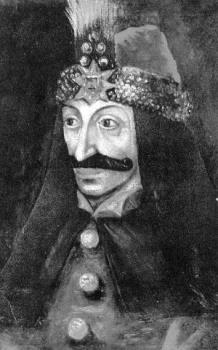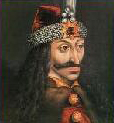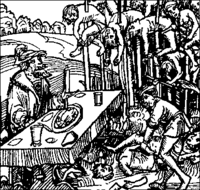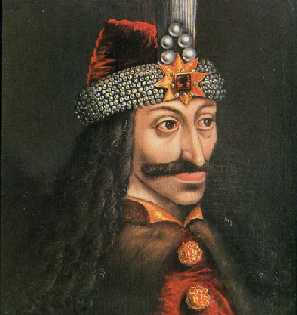is Dracula a mith or a person?
By cizmapiele
@cizmapiele (349)
Finland
6 responses
@cizmapiele (349)
• Finland
7 Dec 06
Great, thanks for confirming. Do you know where from comes the real part of Dracula?
1 person likes this
@cizmapiele (349)
• Finland
8 Dec 06
It is a myth, the myth of Stocker's Dracula. But not only a myth. Every myth has an origin somewhere in the reallity. Stoker came across some information about vampire beliefs in Transylvania which he used in the novel. It has been suggested that Stoker was influenced by the history of Countess Elizabeth Bathory, who was born in the Kingdom of Hungary. It is believed that Bathory tortured and killed up to 700 servant girls in order to bathe in or drink their blood. She believed their blood preserved her youth, which may explain why Dracula appeared younger after feeding. Moreover, Stoker did not make up the name "Dracula". There was a Dracula in the 15th century: Vlad the Impaler (Vlad Tepes in Romanian language), descended from Basarab the Great, a fourteenth-century prince who is credited with having founded the state of Wallachia, part of present-day Romania. Please read the other responses I added here, you will find more information about the other side of the Dracula meaning, except of the myth.
1 person likes this
@cizmapiele (349)
• Finland
7 Dec 06
...and both. The Stocker's Dracula? But Stoker did not make up the name "Dracula". There was a Dracula in the 15th century: Vlad the Impaler. Stoker didn't know much about him (at least I don't think he did) but he came across his name in a book he was researching entitled AN ACCOUNT OF THE PRINCIPALITIES OF WALLACHIA AND MOLDAVIA (1820). This book has a very short section on a "Voivode Dracula" who fought against the Turks. What attracted Stoker to the name "Dracula" was a footnote by Wilkinson which stated that "Dracula in the Wallachian language means devil". Not quite accurate, but that is what Stoker saw and copied into his notes. He was originally going to call his vampire "Count Wampyr" but changed it to "Count Dracula." This change is clearly made in Stoker's own notes for DRACULA which are located at the Rosenbach Museum in philadelphia. The real Dracula (about whom we know much more than Stoker ever did) was NOT a Count, nor was he a vampire (or ever associated with vampires). The two Draculas have become greatly confused in many people's minds.
1 person likes this
@cizmapiele (349)
• Finland
8 Dec 06
That's correct. The historical person Dracula has in common with the mythical person the atrocities and the name, as well as the origine: Romania. While the historical one was indeed born in Romania, the mythical one came from under the pen of Stocker's. Please read the other answers I have given based on this topic. Among the Romanian peasantry, Vlad Tepes was remembered as a just prince who defended his people from foreign aggression, whether those foreigners were Turkish invaders or German merchants. He is also remembered as a champion of the common man against the oppression of the boyars. However, despite the more positive interpretation, the Romanian oral tradition also remembers Vlad as an exceptionally cruel and often capricious ruler. For the presentation of the mythical Dracula it has been suggested that Stoker was influenced by the history of Countess Elizabeth Bathory, who was born in the Kingdom of Hungary. It is believed that Bathory tortured and killed up to 700 servant girls in order to bathe in or drink their blood. She believed their blood preserved her youth, which may explain why Dracula appeared younger after feeding. As for the Vlad the Impaler, his bloodthirsty exploits may have led him to being linked with the legends of blood- drinking vampires!
1 person likes this











